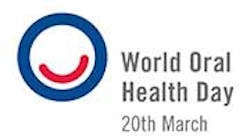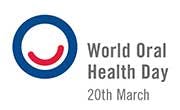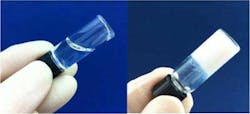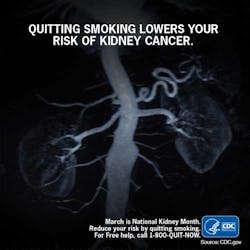Along those lines, the ADA released a publication in December 2013, “Action for Dental Health: Bringing Disease Prevention into Communities. A Statement from the American Dental Association."(2) The document focuses on preventing disease. Disease prevention is becoming increasingly more important in all of health care, as it saves pain, money, and lives. Dentistry is unique in both the length of time that it has practiced prevention and the degree of its success. Fluoride is a good example of the success of prevention. We know that the two most prevalent dental diseases, tooth decay and gum disease, are almost entirely preventable. Read the 16-page paper for more information.(2) Also on the preventive side, poor oral health has been associated with rheumatoid arthritis. P. gingivalis produces a unique enzyme, peptidylarginine deiminanse (PAD), which then enhances collagen-induced arthritis (CIA), a form of arthritis similar to RA produced in the lab.(3) This knowledge may create new perspectives in the treatment and prevention of RA in susceptible individuals, and reinforce our efforts to stress good oral hygiene. A new shrinking, sponge-like gel turns transplanted unspecialized cells into cells that lay down minerals and begin to form teeth.(4) A process called mesenchymal condensation that embryos use to begin forming a variety of organs, including teeth, cartilage, bone, muscle, tendon, and kidney, is being investigated by Tadanori Mammoto, MD, PhD, Instructor in Surgery at Boston Children's Hospital and Harvard Medical School. In mesenchymal condensation, two adjacent tissue layers exchange biochemical signals. These layers are loosely packed connective-tissue cells called mesenchyme, and sheet-like tissue called an epithelium that covers the mesenchyme. This interchange causes the mesenchymal cells to crowd themselves tightly into a small knot directly below where the new organ will form. For more information, read the article in Medical News Today.(4) Kerr TotalCare recently rereleased a white paper that outlines current dental surface disinfection protocols.(5) The paper gives clinicians a comparative overview and evaluation of disinfecting products and practices to increase compliance in the workplace. The paper highlights that risks to workplace safety happen when health care providers are uncertain about the limits of a product.
Product information that is necessary to provide a safe workplace environment includes knowing what surfaces a product can be used on, potential toxicity on skin, required contact time for disinfection, and compatibility with other chemicals and materials. Protocols for surface disinfectants that provide a safe, rapid effectiveness against tuberculosis and other infectious diseases are highlighted, as well as products that are compatible with common dental office materials.(5)
Liquid bone to gel, and back again? Bioengineers have developed a hydrogel scaffold for craniofacial bone tissue regeneration that begins as a liquid, solidifies into a gel in the body, and liquefies again for removal.(6) The soluble liquid at room temperature can be injected where it is needed. At body temperature, the material turns instantly into a gel to help direct the formation of new bone to replace that damaged by injury or disease.(6) For more information, read the press release and the article.(6,7)
An injectable hydrogel scaffold undergoes rapid gelation from a soluble liquid at room temperature (below left) to form a stable, non-shrinking gel at body temperature (below right) after one minute.
March is designated National Kidney Month to raise awareness about the prevention and early detection of kidney disease. In 2011, kidney diseases were the ninth leading cause of death in the United States(10). More than 10% (>20 million) of U.S. adults aged ≥20 years have chronic kidney disease [CKD].(2) The chances of having CKD increase with age; the disease is most common among adults aged >70 years. There is a very up-to-date National Chronic Kidney Disease Fact Sheet, 2014 available.(11)
On a positive note, colon cancer incidence rates have dropped 30 percent in the U.S. in the last 10 years among adults 50 and older due to the widespread uptake of colonoscopy, with the largest decrease in people over age 65.(12) Colonoscopy use has almost tripled among adults ages 50 to 75, from 19 percent in 2000 to 55 percent in 2010. Yet one more example of how prevention, screening, and early intervention works!
References
1. http://www.worldoralhealthday.org/.
2. https://www.ada.org/sections/advocacy/pdfs/ADA_AfDH_Prevention.pdf.
3. Maresz KJ, Hellvard A, Sroka A, Adamowicz K, Bielecka E, et al. (2013) Porphyromonas gingivalis Facilitates the Development and Progression of Destructive Arthritis through Its Unique Bacterial Peptidylarginine Deiminase (PAD). PLoS Pathog 9(9): e1003627. doi:10.1371/journal.ppat.1003627.
4. http://www.medicalnewstoday.com/releases/273631.php#citations.
5. http://hs.kerrtotalcare.com/hs-fs/hub/164363/file-18246937-pdf/docs/andrewskelsch_white_paper_web.pdf.
6. Vo TN, Ekenseair AK, Kasper FK, and Mikos AG. Synthesis, Physicochemical Characterization, and Cytocompatibility of Bioresorbable, Dual-Gelling Injectable Hydrogels. Biomacromolecules, 2014, 15 (1), pp 132–142. December 10, 2013. DOI: 10.1021/bm401413c.
7. Press release. Liquid to gel to bone. http://www.eurekalert.org/pub_releases/2013-12/ru-ltg121113.php.
8. http://www.cdc.gov/cancer/dcpc/resources/features/ColorectalAwareness/.
9. http://www.cdc.gov/mmwr/preview/mmwrhtml/mm6309a7.htm.
10. Hoyert DL, Xu JQ. Deaths: preliminary data for 2011. Natl Vital Stat Rep 2012;61(6).
11. http://www.cdc.gov/diabetes/pubs/pdf/kidney_factsheet.pdf.
12. Rebecca Siegel, Carol DeSantis, Ahmedin Jemal. Colorectal cancer statistics, 2014. CA: A Cancer Journal for Clinicians, 2014; DOI: 10.3322/caac.21220.
Sincerely,
Maria Perno Goldie, RDH, MS
To read previous RDH eVillage FOCUS introductions by Maria Perno Goldie, go to introductions.
To read more about arthritis and dental hygiene, click here.












